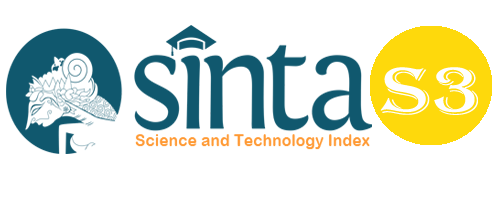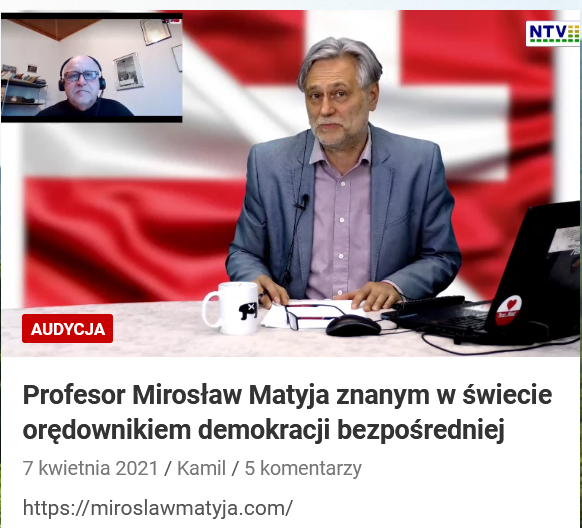Anonymity Phenomenon In Base Fwb (Friends With Benefits) On Twitter And Motivation For Freedom Of Sexual Expression
Abstract
Anonymity has ( become a thing that is often found on social media today. Anonymity refers to an environment that involves secrets, hidden identities, and masks of personality. Anonymity is characterized by the "loss of identity" that results from the removal of certain elements such as names and addresses (Wallace, 1999). It is a topic that is often discussed since communication is carried out by the Internet. HAI magazine once conducted a survey of teenagers. As a result, 46% of the 300 teenagers surveyed apparently had a second account which they referred to as an alter account (Rini & Manalu, 2019). There are several reasons why they create alter accounts, among others, to follow things that are not worthy of being followed by the original account, stalking other people without being caught, and so that they can be more expressive –something they can't do on the original account because of a sense of prestige- . The type base that an alter account fulfills is a base for FWB or friends with benefits. On Twitter, base refers to an account that retweets or uploads posts that match the theme of that account . Therefore, his followers usually also have the same pleasure as what the base uploads. The method used in this study is a qualitative method. Qualitative method is a method that makes the researcher a key instrument in an object with natural conditions (Sugiyono, 2005). Qualitative can also be defined as an analysis to understand the phenomena that occur in the subject under study in a special context, with various methods, and described in the form of words (Moleong, 2005). Behavioral FWB or friends with benefits is a behavior that is considered not in accordance with the norms in Indonesia and is a form of adultery. Zina, in the KBBI, is an act of sexual intercourse between a man and a woman who are not bound by marriage. In the five recognized religions in Indonesia, adultery is a sin and is not allowed at all. In the end, anonymity is a double-edged sword. It can be a way to protect one's identity, but it can also be misused for social deviance. This is in line with differing opinions from experts, such as Brazzier who agrees to anonymity on the pretext of avoiding information piracy and Levmore & Nussbaum who considers anonymity a source of negativity and online hostility
Keywords
Full Text:
PDFReferences
AbuSeileek & Khaleel Qatawneh. (2013). Effects of synchronous and asynchronous computer-mediated communication (CMC) oral conversations on English language learners' discourse functions. Elsevier Computer & Education Vol 62, March, 2013.https://doi.org/10.1016/j.compedu.2012.10.013
Bai, Qiyu, Qi Dan, Zhe Mu, & Maokun Yang. (2019). A Systematic Review of Emoji: Current Research and Future Perspectives (Front. Psychol., https://doi.org/10.3389/fpsyg.2019.02221)
Brazier, F., Oskamp, A., Prins, C. et al. (2004). Anonymity and software agents: An interdisciplinary challenge. Artif Intell Law 12, 137–157. https://doi.org/10.1007/s10506-004-6488-5
Chenoweth, Erica. (2021). Civil Resistance: What Everyone Needs to Know. New York: Oxford University Press
Correa, D, Silva, LA, Mondal, M. (2015) The many shades of anonymity: characterizing anonymous social media content. In: Proceedings of the ninth AAAI international conference on web and social media, Oxford, 26–29 May, pp. 71–80. Palo Alto, CA: AAAI Press.
Eriyanto, 2002. Analisis Framing: Konstruksi, Ideologi, dan Politik Media. Yogyakarta: PT LKis
Grafman, Jordan; François Boller; Rita Sloan Berndt; Ian H. Robertson; Giacomo Rizzolatti (2002). Handbook of Neuropsychology. Elsevier Health Sciences. p. 103
Hardaker, C. (2010). Trolling in asynchronous computer-mediated communication: from user discussions to academic definitions. J. Politeness Res. 6, 215–242. doi: 10.1515/jplr.2010.011
Johnson, N. A., Cooper, R. B., and Chin, W. W. (2009). Anger and flaming in computer-mediated negotiation among strangers. Decis. Support Syst. 46, 660–672. doi: 10.1016/j.dss.2008.10.008
Jovanovic, Jasna & Jean Calterone William (2017). Gender, Sexual Agency, and Friends with Benefits Relationships". Sexuality & Culture. 22 (2): 555–576. doi:10.1007/s12119-017-9483-1.
Kiesler, S., Siegel, J., and McGuire, T. W. (1984). Social psychological aspects of computer-mediated communication. Am. Psychol. 39, 1123–1134. doi: 10.1037/0003-066X.39.10.1123
Kriyantono, Rahmat.( 2006). Teknik Praktis Riset Komunikasi. Jakarta : PT. Kencana Perdana
Kuswarno, Engkus. (2009). Fenomenologi. Bandung: Widya Padjadjaran
Lapidot-Lefler, N., and Barak, A. (2012). Effects of anonymity, invisibility, and lack of eye-contact on toxic online disinhibition. Comput. Human Behav. 28, 434–443. doi: 10.1016/j.chb.2011.10.014
Levmore, Saul, Martha Craven Nussbaum. (2010). The Offensive Internet: Speech, Privacy, and Reputation. Massachutset: Harvard University Press
Lexy J. Moleong. 2005. metodologi penelitian kualitatif, Bandung: Remaja
Lingam, Revathy Amadera & Norizah Aripin (2019). The Role of Anonymity in the Flaming Activity on YouTube in Malaysia. Jurnal The Messenger Vol 11, No 1A, Special Issue on the School of Multimedia Technology and Communication Postgraduate Symposium, pp.111 DOI: 10.26623/themessenger.v11i1A.832
Machia, Laura V., Morgan L Proulx., Michael Ioerger, Justin J. Lehmiller (2020). A longitudinal study of friends with benefits relationship. Personal Relationships. 27 (1): 47–60. doi:10.1111/pere.12307.
Marbun, D. S., et al. (2020). The Effect of Social Media Culture and Knowledge Transfer on Performance. Budapest International Research and Critics Institute-Journal (BIRCI-Journal), Volume 3, No 3, Page: 2513-2520.
McQuail, D. (2005) McQuail's Mass Communication Theory. 5th Edition, London: Sage Publications Ltd.
Musyafa’ah, Nurul. (2017). Analisis Wacana Kritis Model Teun A. Van Dijk “Siswa Berprestasi Jadi Pembunuh”. Bojonegoro: Institut Agama Islam Sunan Giri Bojonegoro
Privitera, C., and Campbell, M. A. (2009). Cyberbullying: the new face of workplace bullying? Cyberpsychol. Behav. 12, 395–400. doi: 10.1089/cpb.2009.0025
Rini, Lilis Nosiva & Rouli Manalu. (2019). Memahami Penggunaan dan Motivasi Akun Anonim Instagram di Kalangan Remaja. Semarang: Universitas Diponegoro
Roberts, P. (2000). The Evolution, Definition and Purpose of Urban Regeneration Urban Regeneration Handbook. London SAGE Publications.
Scott, Susan V. & Wanda J. Orlikowski. (2012). Reconfiguring relations of accountability: Materialization of social media in the travel sector. Elsevier, Accounting, Organization, and Society, 26-40. https://doi.org/10.1016/j.aos.2011.11.005
Stainback, Susan Bray & William C. Stainback (1988). Understanding & Conducting Qualitative Research. Arlington: Council for Exceptional Children,
Sudjana, N. dan Ibrahim, R,. (2001). Penelitian dan Penilaian Pendidikan. Bandung : Sinar Baru Algesindo
Sugiyono.( 2005). Memahami Penelitian Kualitatif. Bandung: CV. Alfabeta
Suler, J. (2004). The Online Disinhibition Effect. CyberPsychology & Behavior, 7(3), 321–326. https://doi.org/10.1089/1094931041291295
Thurlow, Crispin, Laura Lengel, & Alice Tomic (2004). Computer Mediated Communication: Social Interaction and the Internet. London: SAGE Publications
Vogesser, Birgit J. Ranjit K. Singh, & Anja S. Goritz. (2018). Self-control in Online Discussions: Disinhibited Online Behavior as a Failure to Recognize Social Cues.Front. Psychol., https://doi.org/10.3389/fpsyg.2017.02372
Wallace, P. (1999). The Psychology of the Internet. New York, NY: Cambridge University Press. https://doi.org/10.1017/CBO9780511581670
Yusar, Febrina, Sukarelawati, & Agustini (2020). Kognisi Sosial Dalam Proses Analisis Wacana Kritis Model Van Dijk Pada Buku Motivasi. Jurnal Komunikatio, 65-76. : https://doi.org/10.30997/jk.v6i2.2876
Zimbardo, P. G. (1969). The human choice: Individuation, reason, and order versus deindividuation, impulse, and chaos. Nebraska Symposium on Motivation, 17, 237–307.
DOI: https://doi.org/10.33258/birci.v5i2.5094
Article Metrics
Abstract view : 115 timesPDF - 48 times
Refbacks
- There are currently no refbacks.

This work is licensed under a Creative Commons Attribution-ShareAlike 4.0 International License.

This work is licensed under a Creative Commons Attribution-ShareAlike 4.0 International License.

_.gif)

















_.gif)



